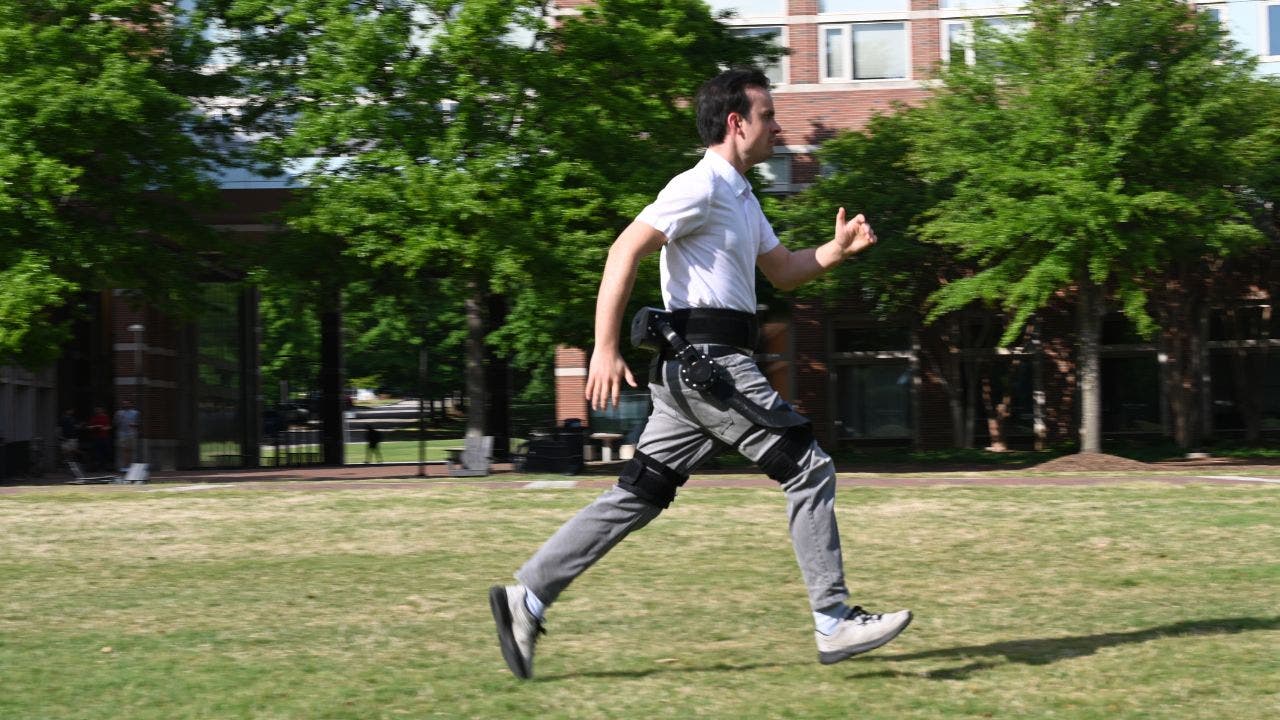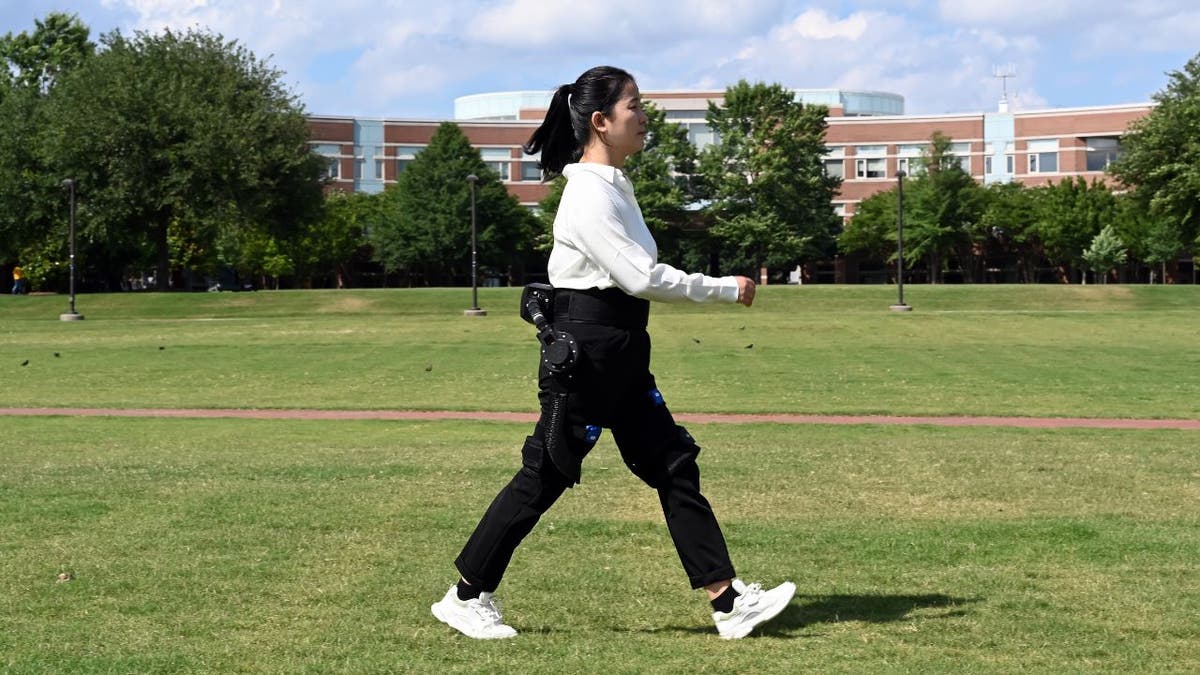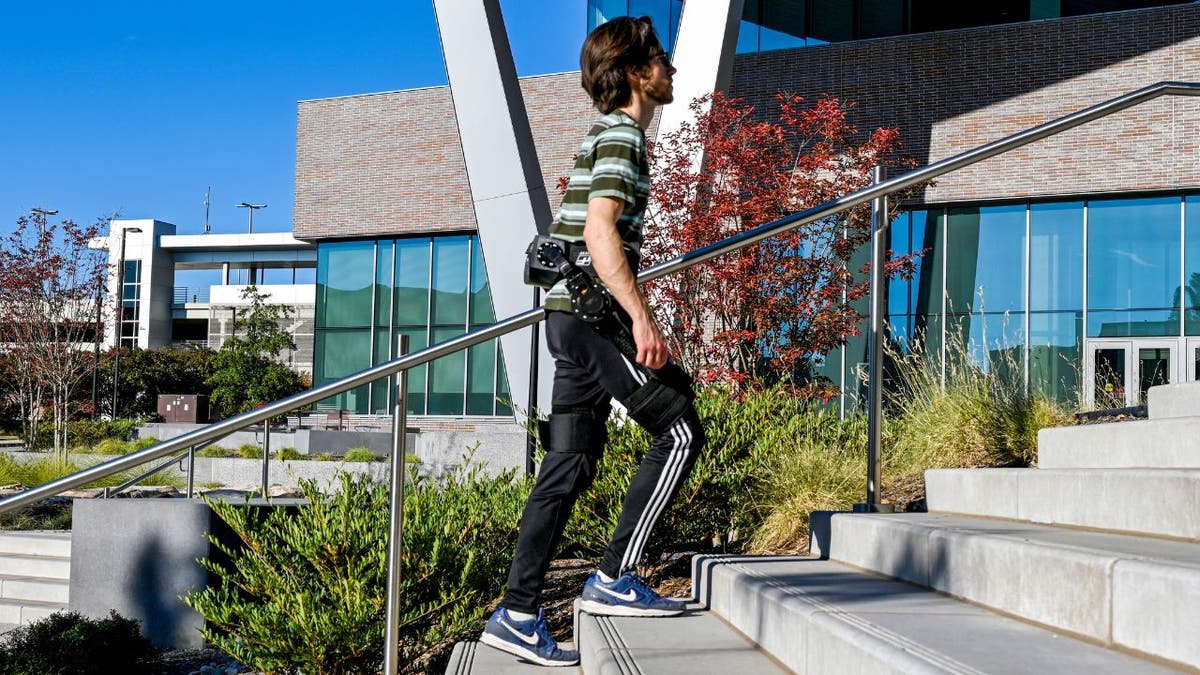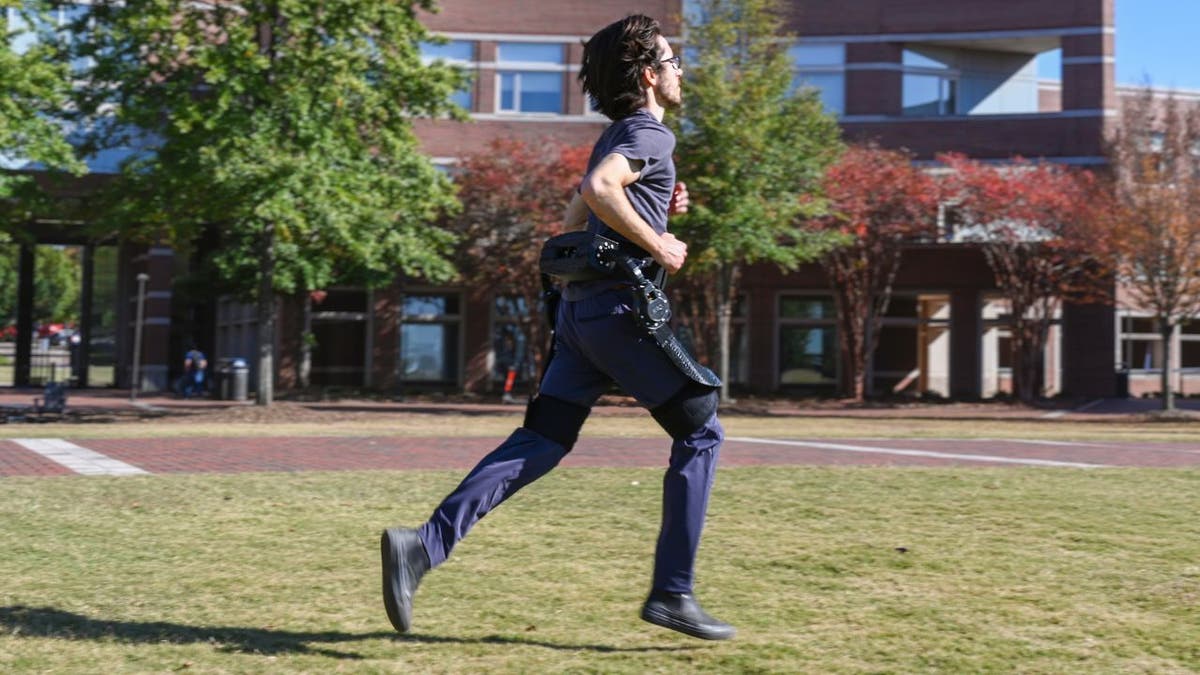Technology
The Vision Pro will get Apple Intelligence and “Go Deeper” in-store demos
/cdn.vox-cdn.com/uploads/chorus_asset/file/25255195/246965_vision_pro_VPavic_0034.jpg)
For all its impressive technical chops, Apple’s all-singing, all-dancing Vision Pro hasn’t set the world on fire. But it’s early yet, and the company continues to throw some weight behind the headset, and reportedly has plans to add AI features to visionOS and is readying an updated approach to in-store demos.
The company is adding a new “Go Deeper” option to its in-store demos, Gurman writes. That reportedly includes testing office features and watching videos, as well as defaulting to the Dual Loop band that sends straps over the top and around the back of wearers’ heads instead of the single-strap Solo Loop band, which some find uncomfortable.
Apple will also reportedly let people view their own videos and photos, including panoramas, in the headset. Adding the sentimental touch to the demos could work out, especially once visionOS 2 comes out this fall, with its “spatialize” option to turn 2D photos into 3D ones — a feature that’s more impressive than it has the right to be (though still a little quirky with hair and glasses, like Apple’s Portrait Mode feature).
But I can imagine it going the other way if people end up looking at the wrong images. You know how looking at your iPhone photos on your computer monitor suddenly exposes all their flaws? Try looking at them when they’re the size of a wall.
But it really feels like all of this is just triage until the company releases a cheaper headset, which its expected to do at the end of next year. It’s not clear what that will look like, though, given conflicting rumors at the moment — like that it’s going with lower-res displays for a follow-up or that it actually aims to keep the high-res displays but has stopped working on the Vision Pro 2 (or not).
The common thread running through all of those stories, though, is that Apple is finding it very hard to make the headset it wants to make without it costing a hojillion dollars. It’s too early to declare the Vision Pro a dead end, but I can’t shake the feeling that without that cheaper headset, Apple doesn’t have a path forward unless it’s okay with letting the Vision Pro serve a niche market while it chases that lightweight AR glasses dream.

Technology
This dual-screen laptop swings horizontally — and quotes the Whole Earth Catalog
/cdn.vox-cdn.com/uploads/chorus_asset/file/25515946/5e884fbc_2dd2_4744_86d3_bd7ab9b65b4f.jpg)
Unlike the Asus Zenbook Duo and Lenovo Yoga Book 9i we reviewed earlier this year, it’s not a twin-screen tablet with a detachable keyboard; this one’s most definitely a laptop with an extra screen on a hinge that swings all the way around. And unlike the upcoming GPD Duo, it swings horizontally instead of vertically. The company is calling it the “world’s first horizontally foldable 360 degree laptop.”
While we don’t have a price, release date, or full spec sheet yet, it seems this laptop isn’t shooting for gaming or high-end productivity; it’ll be equipped with a two-year-old 12th Gen Intel Core i7-1255U processor (we’re expecting 15th Gen this fall), 16GB of DDR4 memory, and a 1TB PCIe 3.0 SSD.
It also only supports 5Gbps transfer speeds from its USB-A and USB-C ports and HDMI 2.0 rather than HDMI 2.1 for its video output. And one of its two USB-C ports is only for charging.
Still, there are lots of tasks that don’t necessarily need lots of horsepower but could benefit from more visual real estate — and the second screen isn’t the only unique thing about this machine!
The Acemagic X1 also includes, and I quote:
Adding to its distinctive appeal, ACEMAGIC has engraved Steve Jobs’s iconic quote, “Stay hungry, Stay foolish,” in real gold on the left side of the keyboard. This touch symbolizes the device’s premium quality and innovative spirit.
(No, we don’t have a picture of the gold lettering to see if Steve Jobs’ name is also on the side of this laptop.)
Technology
AI-driven exoskeleton lightens your load, elevates performance

A groundbreaking AI-powered exoskeleton developed by researchers at North Carolina State University and the University of North Carolina at Chapel Hill promises to be a game-changer for individuals with mobility issues.
I showed off a similar technology and got a mountain of messages asking if there was an application for disabled folks. This new exoskeleton could very well be that help.
The wearable technology provides unprecedented energy savings during human movement, making users feel as if they’re carrying 26 pounds less. This results in significant improvements in athletic performance and daily life activities.
GET SECURITY ALERTS, EXPERT TIPS – SIGN UP FOR KURT’S NEWSLETTER – THE CYBERGUY REPORT HERE
A man running while wearing an AI-powered exoskeleton (NCSU) (Kurt “CyberGuy” Knutsson)
The power of digital twin simulations
The secret behind this revolutionary exoskeleton lies in sophisticated digital twin simulations, where humans and machines coexist, learning and adapting through millions of iterations to perfect physical assistance. The exoskeleton’s AI algorithm, still in development, goes beyond traditional machine learning focused on simulations and games, venturing into a new frontier where technology directly enhances human capabilities.

A woman walking while wearing an AI-powered exoskeleton (NCSU) (Kurt “CyberGuy” Knutsson)
BEST WEARABLE DEVICES TO TRACK YOUR BLOOD OXYGEN LEVELS
Data-driven and physics-informed reinforcement learning
The researchers have embraced data-driven and physics-informed reinforcement learning, an approach that ensures their wearable robots are not just smart but also intuitive, aligning with their mission to improve human mobility and health. This cutting-edge technology maps sensor inputs from the robot to assistive torque without any intermediate steps, enabling end-to-end control.
BEST AMAZON PRIME DAY 2024 EARLY DEALS

A man climbing stairs while wearing an AI-powered exoskeleton (NCSU) (Kurt “CyberGuy” Knutsson)
SKYROCKET TO A HEALTHIER LIFESTYLE WITH THIS GEAR IN 2024
Versatile assistance across multiple activities
One of the most remarkable features of this exoskeleton is its ability to generate synergistic assistance across various activities, including walking, running and stair-climbing. The learned controller automatically adapts to each user’s different kinematic patterns, accommodating transitions between activities seamlessly without the need for handcrafted control.
HOW TO REMOVE YOUR PRIVATE DATA FROM THE INTERNET

A man running while wearing an AI-powered exoskeleton (NCSU) (Kurt “CyberGuy” Knutsson)
THE BEST TRAVEL GEAR FOR 2024
Unprecedented metabolic cost reduction
The experimental results are nothing short of impressive. Among state-of-the-art portable exoskeletons, the exoskeleton achieved the greatest metabolic cost reduction for walking (24.3%), running (13.1%) and stair-climbing (15.4%). This remarkable achievement stems from the experiment-free and versatile control approach, which eliminates the need for lengthy human tests and handcrafted rules.

Diagram of AI-powered exoskeleton’s results (NCSU) (Kurt “CyberGuy” Knutsson)
SUBSCRIBE TO KURT’S YOUTUBE CHANNEL FOR QUICK VIDEO TIPS ON HOW TO WORK ALL OF YOUR TECH DEVICES
How much will the exoskeleton cost?
We spoke to Hao Su, Ph.D., associate professor at North Carolina State University and the University of North Carolina at Chapel Hill. He is also the director of Biomechatronics and Intelligent Robotics Lab (BIRO), and he told us, “While the exoskeleton price is about $50,000 to $120,000 due to research and development costs and actuators, our approach can significantly reduce the R&D cost by leveraging our efficient learning-in-simulation framework, which allows for rapid design and testing in computer simulations rather than intensive testing on humans and physical robots.
“Looking forward, we plan to make our robots truly affordable and accessible through innovative hardware design, namely low-ratio gears and cost-effective but high-torque electric motors. In about one year, we aim to make our exoskeletons for sale at a price range of $1,500 to $4,000, depending on specific features and manufacturing scale.”
Kurt’s key takeaways
This AI-powered exoskeleton marks a major advancement in wearable robotics. It offers the rapid development and widespread adoption of assistive robots for both able-bodied and mobility-impaired individuals. This technology has the potential to revolutionize the field of exoskeletons, paving the way for a future where mobility is no longer a barrier and eliminates the hurdles of movement limitations.
What activities or tasks do you struggle with currently that this type of wearable robotic assistance could help make easier or more accessible? Let us know by writing us at Cyberguy.com/Contact.
For more of my tech tips and security alerts, subscribe to my free CyberGuy Report Newsletter by heading to Cyberguy.com/Newsletter.
Ask Kurt a question or let us know what stories you’d like us to cover.
Follow Kurt on his social channels:
Answers to the most asked CyberGuy questions:
Copyright 2024 CyberGuy.com. All rights reserved.
Technology
The Pixel 9’s “Google AI” is like Microsoft Recall but a little less creepy
The next generation of Pixel phones could come with new “Google AI” features, including one that sounds a little like Microsoft’s controversial Recall tool. As reported by Android Authority, Google is working on a “Pixel Screenshots” feature that can “save and process helpful details” from your screenshots, allowing you to search through them.
However, unlike Microsoft Recall, which automatically captures what you’re doing on your device, Google’s version would only process the screenshots taken manually — which should immediately make it less creepy-feeling than Recall. Microsoft delayed the rollout of Recall on Windows 11 after security experts raised concerns about the feature. Even though Google AI may only use the screenshots you take, it could raise similar concerns based on how the information is processed and stored.
Images obtained by Android Authority indicate that you can enable or disable AI processing for your screenshots at any time. When toggled on, it looks like you can use the feature to summarize your screenshots or answer questions about the information in them. Google will also save metadata, such as links, app names, and when the screenshot was taken to make it easier to search for specific images, according to Android Authority.
Google is planning to roll out a similar feature in Google Photos that uses AI to help you search through your photos. These aren’t the only AI features Google is working on, either. In addition to Pixel Screenshots, Android Authority reports that a new photo editing feature called “Add Me” will live under the Google AI umbrella. This feature could let you add someone to a group photo, which goes a step further than tweaking everyone’s faces with Best Take. Google will also reportedly add a previously rumored Studio tool that could use AI to generate stickers and other images.
-

 News1 week ago
News1 week agoA Florida family is suing NASA after a piece of space debris crashed through their home
-

 Movie Reviews1 week ago
Movie Reviews1 week agoFilm Review: Everyday of the Dead (2023) by Yuyuma Naoki
-

 Politics1 week ago
Politics1 week agoBiden official says past social media posts don’t reflect ‘current views,’ vows to support admin ‘agenda’
-

 World1 week ago
World1 week agoNew Caledonia independence activists sent to France for detention
-

 World1 week ago
World1 week agoIsrael accepts bilateral meeting with EU, but with conditions
-

 World1 week ago
World1 week agoNetanyahu says war will continue even if ceasefire deal agreed with Hamas
-

 News1 week ago
News1 week agoArkansas police confirm 4th victim died in grocery store shooting
-

 Politics1 week ago
Politics1 week agoDeSantis signs bill allowing residents to kill bears, vetoes bill that fines slow left lane drivers














